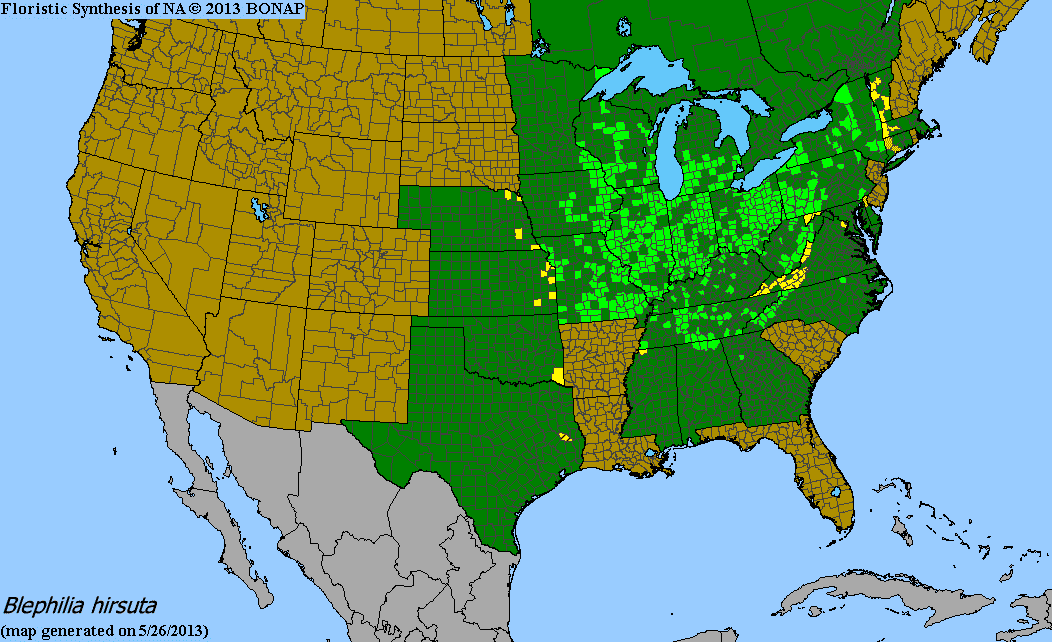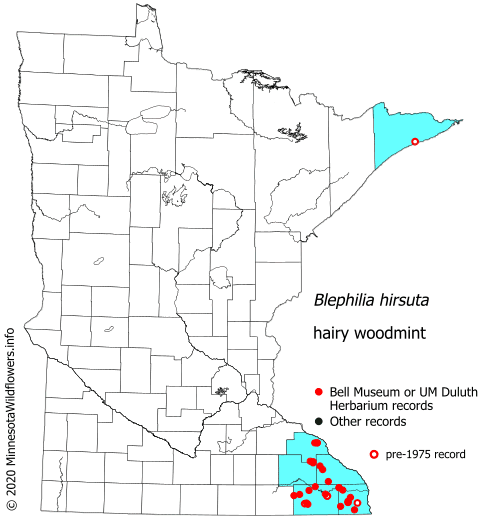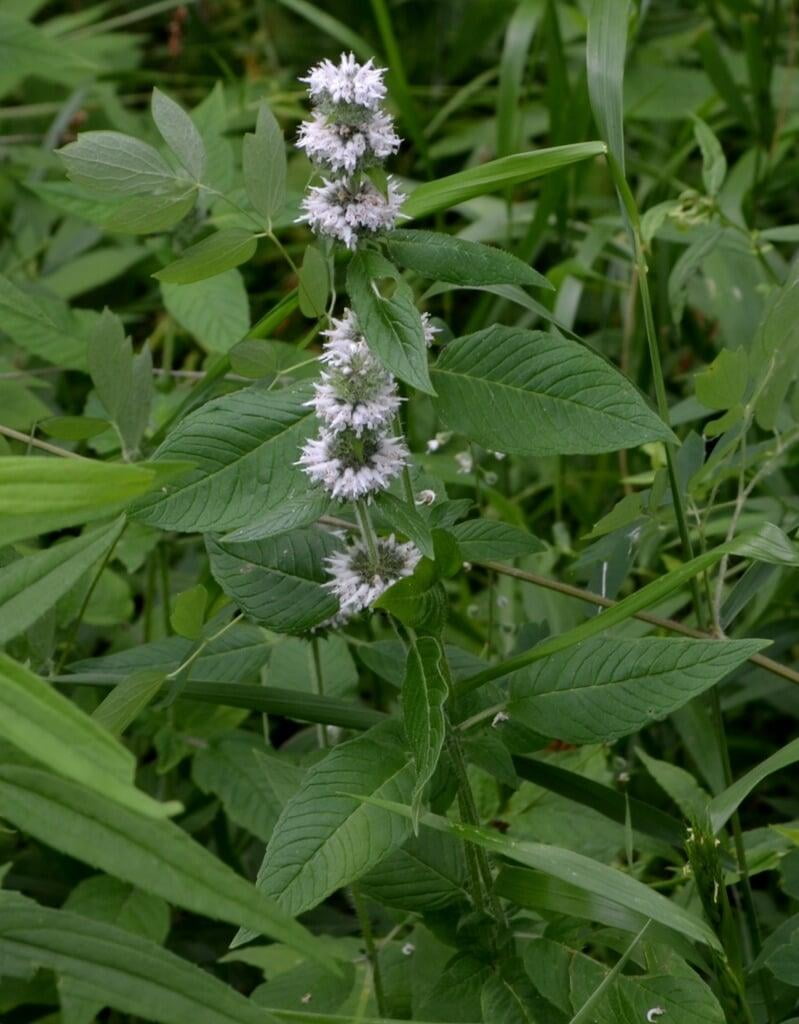Blephilia hirsuta
Hairy woodmint Description:
Blephilia hirsuta, commonly known as Hairy Woodmint or Woodmint, is a perennial herbaceous plant that is native to the eastern and central regions of North America. It typically grows to a height of 1-3 feet (0.3-0.9 meters) and spreads to about 1-2 feet (0.3-0.6 meters) wide. The plant has square stems and opposite leaves that are covered in fine hairs, giving it a slightly fuzzy texture.
Blephilia hirsuta produces clusters of small, tubular flowers that are pink to lavender in color and attract a variety of pollinators, particularly bees and butterflies. The flowers are arranged in whorls around the stem and bloom from late spring to early fall. The plant is a good source of nectar for pollinators and can be used in pollinator gardens or naturalized areas.
The leaves of Blephilia hirsuta are aromatic and have a mint-like scent when crushed. They can be used to make a fragrant tea or added to salads for their pleasant flavor. The plant has also been used in traditional medicine for various ailments, including digestive issues and respiratory problems.
Blephilia hirsuta is a deer-resistant plant and can be grown in a variety of soil types, including clay and sandy soils. It prefers full sun to partial shade and can be propagated by seed or division. Overall, Blephilia hirsuta is a valuable addition to wildflower gardens and naturalized areas, providing both aesthetic and ecological benefits.
Native Range:
Hairy woodmint is found natively in Minnesota, however, it is primarily only in far Northeastern and Southeastern corners of the state. Outside of Minnesota, Hairy woodmint can be found as far South as Texas and as far east as North Carolina.
Standard Plant Information:
Plant Height: 16" - 30"
Bloom Time: June - September
Preferred Habitat: Does well in part shade to full shade. Often found moist woods, floodplains, and thickets.
Sowing:
For most homeowners, the best option is to scatter seed on the ground by hand broadcasting at a minimum of 16-64 pls ounces per acre. For even coverage, we recommend that you broadcast seed in perpendicular rows across the site to ensure even coverage.
You’ll want to broadcast any grass seed first, which will get raked into the soil lightly. Next, it is ideal to mulch the area lightly with either a clean (no seed) straw or preferably with our native Little Bluestem straw, sold at our retail garden centers. After a light mulching is complete, now it’s time to broadcast your native wildflower seeds, which should not be raked into the soil. A good rain or watering is sufficient to cover the seed.
Planting:
Simply dig a hole in the soil slightly larger than the plant’s roots. Ensure that the soil line of the plant is maintained during the transfer (i.e. the plant should be at the same level with the ground as it was in the pot). Pack any loose dirt back around the plant and make sure you water it well the same day to ensure it has the best chance of survival.







